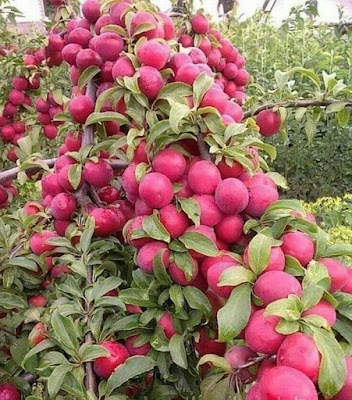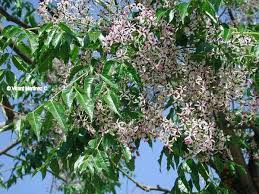Growing Salvia officinalis-Sage for profit has raised much attention during the last two decades. The crop lasts from 6 to 10 years or even more and can give products that can target different industries. Fresh and dried leaves are added in sausages, meat, fish, salads and various other foods. Moreover, the essential oil of sage is globally recognized as a respected product that is used in fragrance, cosmetic, personal hygiene and insect repellent industries. Under special handling, the plant can be harvested 2 or even 3 times a year (from the second year onwards), making it a profitable specialty crop, if the local conditions are optimum.
Sage Climate and Soil requirements
The plant is very resilient and adaptable and can thrive even in poor soil. Sage plants can grow and give an average yield in nearly all well-drained soils. They can withstand pH from 5,5 to 8. However, the best yields are often achieved in soils with a pH close to 7 and with very good drainage.
The climate is the most important restrictive factor when growing Sage. The plant originated from Southeastern Europe and prefers a Mediterranean climate, with mild winters and long summers. However, it can withstand the cold for a few days (-10oC for approximately a week). Additionally, it can thrive in altitudes up to 5000 ft. (1500 m). Common Sage flourishes in sunny locations. Salvia can also be cultivated in plateaus. The optimum soil temperature for sage is between 60º-70ºF (15-21°C).
Sage Propagation – Seeding Rate
Sage can be propagated by i) direct seeding in the field, ii)seeding in pots and then transplanting and iii) by cuttings. Propagation by seeds in an indoor protected environment begins in early spring (March) and the transplanting takes place after the last frost during spring. However, some producers transplant the seedlings in autumn. As a general rule, herb producers prefer vegetative propagation over sexual reproduction (by seeds), because this will ensure that they will have clones of the mother variety. However, Salvia officinalis and some other aromatic and medicinal plants are also propagated by seed at a large scale. Sage seeds are generally bigger compared to lavender, thyme, and basil. They will germinate easily given the proper circumstances.
Propagation by Cutting
If we intend to plant during spring, cuttings are cut 4.0-4.7 inches (10-12 cm) in the late autumn, The rooting procedure will normally last for about 5-6 months. We can pinch some leaves in the spring when the plant has grown, in order to encourage young shoots to grow and stronger flavor.
Direct Seeding
Seed - sow March/April in a greenhouse. Germination usually takes place within 2 weeks. Prick out the seedlings into individual pots when they are large enough to handle and plant them out in early summer. In areas where the plant is towards the limits of its hardiness, it is best to grow the plants on in a greenhouse for their first winter and plant them out in late spring of the following year. Cuttings of heeled shoots, taken off the stem in May and planted out directly into the garden
grow away well. Cuttings of half-ripe wood, 5 - 10cm with a heel, June to August in a frame. Easy. Cuttings of mature wood, 7 - 10cm with a heel, November/December in a cold frame. Layering in spring or autumn. Mound soil up into the plants, the branches will root into this soil and they can be removed and planted out 6 - 12 months later.
Planting Sage – Number of Common Sage Plants per Hectare
When transplanting sage seedlings in the field, the average space between the rows can be 30-35 inches (75-90 cm) and the space between the plants in the single row can be 24-28 inches (60-70 cm). Planting distances depend on the variety selected. For example, we can space smaller varieties at about 11 inches (30 cm) and the large varieties at about 32 inches (80 cm). The plant population of Sage plants is 12.000 – 24.000 plants/ha (1 hectare=2,47 acres = 10,000 m²). The density varies also according to the type of soil. For example, if we have poor soil, then we normally want to increase the number of plants per hectare in order to maximize our yield. On the contrary, if the soil is rich, we will place plants further apart and encourage them to develop a greater leaf surface. The altitude can also affect our planting distances. As a rule of thumb, sage plants in high altitudes are planted more densely, so that they can be protected from cold wind. In humid conditions, it is better to leave greater distances between plants in the row and between the rows, so as to increase air circulation.
Sage Water Requirements
Sage can be grown in areas without any additional irrigation or fertilization. It is considered a dry crop and some farmers have reported that they can harvest a product of higher quality in some varieties if they do not irrigate. Nonetheless, irrigation promotes plant rapid regeneration and is perfect if we expect more than one harvesting session per year. Thus, if we decide to irrigate by taking all the necessary precautions, we may achieve a second or a third harvest in a given year. Although Common Sage is drought tolerant, irrigation can help the young plants thrive. Drip irrigation and flooding is used by many producers, but other irrigation methods such as sprinkler can be applied as well.
Sage Fertilizer Requirements
Sage is famous for growing in non-fertile soils that are unsuitable for many other crops. According to old farmers, sage and lavender are examples of crops that do not need any fertilizer. However, growing commercially sage in today’s competitive landscape requires certain steps towards monitoring, improving and enriching soil nutrients, so that our plants can give high yields for 10-12 years. As it happens in every other crop, there can’t be any universal fertilization practice, because every field is different and has different needs. Performing soil analysis once a year is extremely important in order to diagnose nutrient deficiencies and take corrective actions, under the guidance of a licensed agronomist.
Some Sage farmers report that adding a balanced fertilizer (N:P:K) 5:5:5 at a rate of 700lbs (318kg) per hectare does have a significant increase in plant material yield, especially when we anticipate multiple harvesting sessions a year. Normally, this quantity is often split in 2 or 3 applications, with the first starting immediately after the first harvest.
When growing Sage for essential oil, we may have to consider foliar application (N:P:K 20:20:20) and arbuscular mycorrhizal colonization. According to the Society of Chemical Industry (1), a certain arbuscular mycorrhizal colonization and foliar application pattern resulted in increased quality and quantity of sage essential oil collected.
However, in other experiments (2), bio-fertilizers (N-fixer bacteria) had no effect on yield or chemical composition of essential oil yield.
However, these are just common patterns that should not be followed without making your own research. Every field is different and has different needs. Your sage plants may or may not give higher yields in essential oil or plant material after the application of fertilizers. You can seek advice from a licensed agronomist after conducting a soil analysis.
Sage Weed Management
Unfortunately, sage plants often suffer from weeds, which compete with plants in terms of space, access to sunlight, water and nutrients. The presence of weeds will have a negative effect in the quantity of fresh plant material harvested as well as in the quality of essential oil. It is necessary for all sage growers to have a sound weed control strategy, which may differ significantly between countries, law framework, means of production, the industry at which the product targets etc. Manual weed control on a weekly basis is almost necessary in some cases (organic production).
Some sage farmers cover the part of the soil that is located between the plant rows with a special black mat. They also cover with this black mat the space between the young plants inside the row. The black mat prevents the development of weeds while increasing the soil temperature.
Sage Pests and Diseases
Common Sage often suffers from Aphids. Moreover, the plant is sensitive to root rot when the soil is not well-drained and when we over-irrigate. The key to growing healthy Sage plants is to build an unwelcoming environment to pests. We can grow our Sage plants in the sun. We can water regularly, but keep the soil well-drained. We may also have to remove any dead leaves or flowers. We can also remove any unwanted weeds that can attract various insects. If you have taken all necessary precautions and the problem persists, you may seek advice from your local licensed agronomist.
Sage Harvest
Salvia officinalis is harvested for its leaves (fresh and dry plant material) and for the essential oil. In general, we can harvest 2 or even 3 times a year. However, performing multiple harvesting sessions per year is not an easy task and requires experience. It may also require irrigation and fertilization between the harvesting sessions so that the plants will be encouraged to regenerate quickly. We can proceed to multiple harvesting sessions from the second year onwards.
Experiments (3) have shown that the maximum quality and quantity of essential oil is achieved when we harvest at the flowering stage rather than at the vegetative stage.
According to other experiments (4), the second cut (normally late summer – August) gives considerably higher yields in the dry herb and essential oil than the first harvest, which is carried out during late spring -May. Generally, we have to wait for the plant to form a lot of leaves before harvesting for the first time.
In developing countries, farmers harvest sage by cutting with scissors just under the first set of leaves. Sage can also be harvested mechanically via machines attached to tractors. Those machines cut the stems in predefined lengths in order to promote new growth.
Sage leaves will normally dry out quickly because they have a small water concentration. They can last for 2-3 weeks for fresh herbs and several months for dried herbs. After harvesting, we can dry the harvested parts in a shaded area or in a special dryer. We do this in order to discourage discoloration and safeguard the quality and concentration of the volatile oil.
Sage Herb and Essential Oil Yield
The essential oil that you can extract from dry material of Salvia depends on the variety, growing methods (fertilization, irrigation etc.) and the harvest date.
The average yield of dry material (leaves) with two harvests in a year (for a crop older than two years) is 7000 kg per hectare.
Keep in mind that 1 hectare=10,000m²=2,47 acres and 1 ton = 1000kg = 2200lbs. From this plant material, you can expect 8-20 kg of essential oil per hectare. This yield is annual (total yield per year) and is usually distributed between two or three harvesting sessions (late spring to early autumn). These figures presuppose healthy and mature sage plants managed by experienced growers.
Availability : Sage herb/plant/seed material
Jammu and Kashmir Medicinal Plants Introduction Centre
POB 667 GPO Srinagar JK 190001
WhatsApp: 9858986794
Mob: 09858986794
Ph: 01933-223705
e-mail: jkmpic@gmail.com
home page : https://jkmpic.blogspot.com
Other: https://facebook.com/jkmpic
https://twitter.com/jkmpic
















